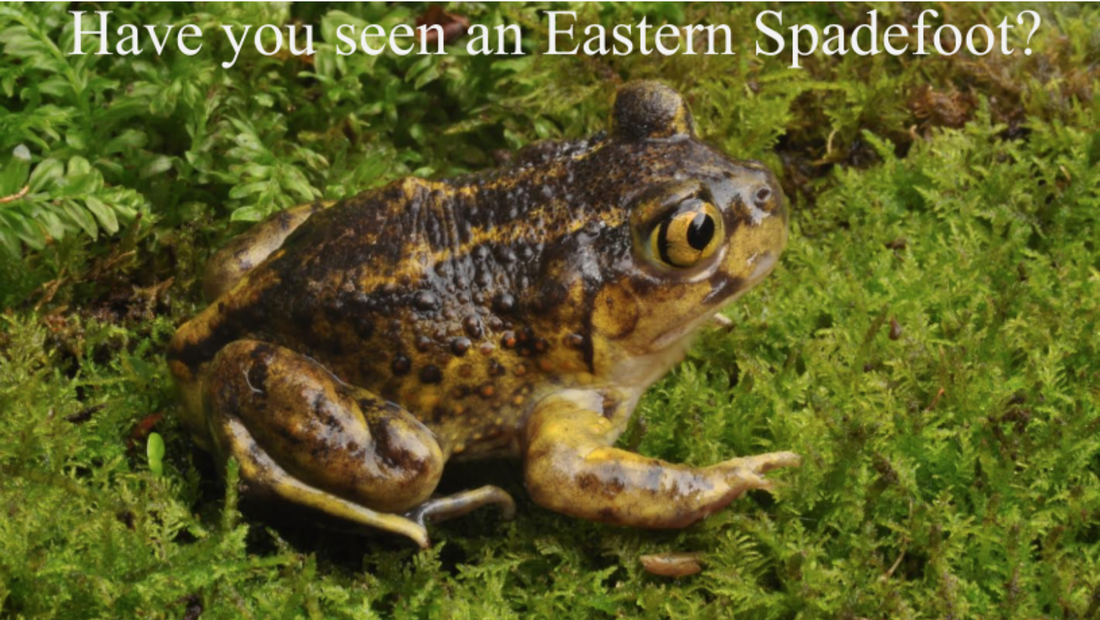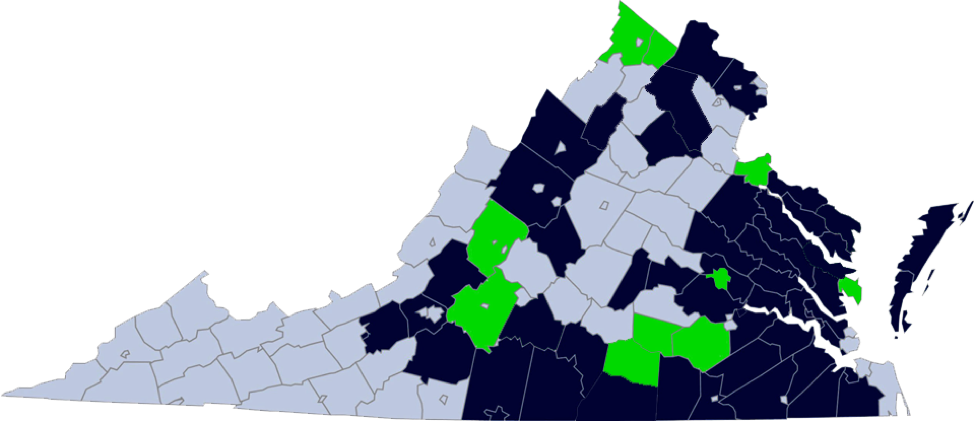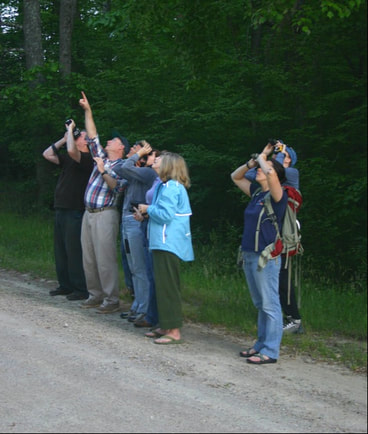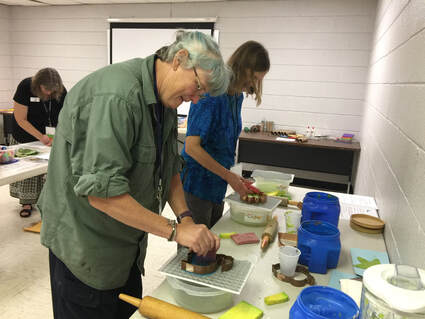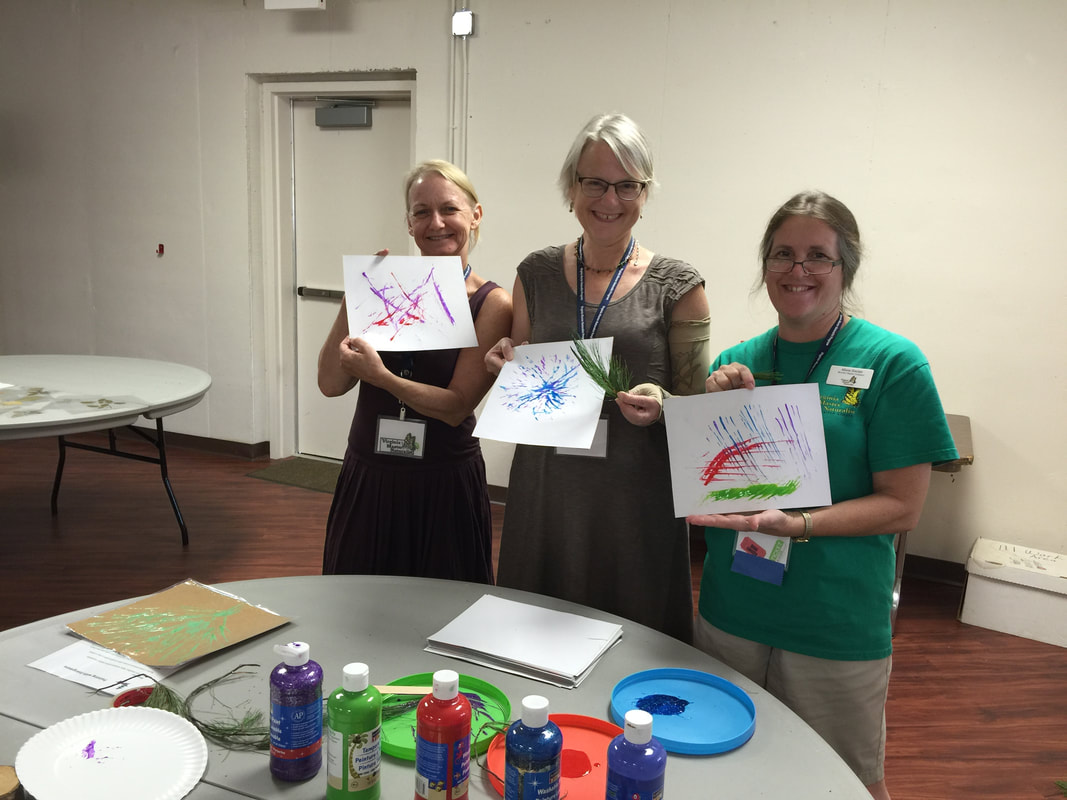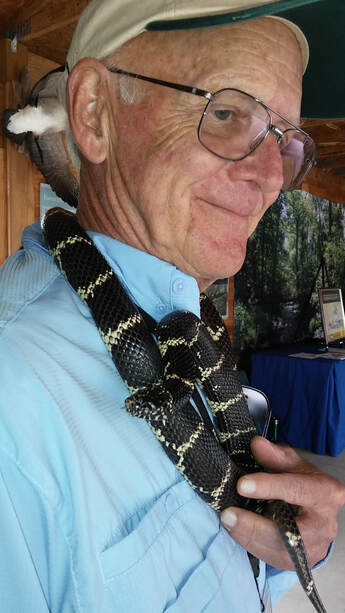 Lee Hesler was a Certified VMN for 8+ years in the Pocahontas Chapter and was a leader both in that chapter and for the multi-chapter Vernal Pool Cooperative project. This photo, contributed by Karen Daniel, was taken at the Virginia State Fair in 2015, where Lee and his wife Jane, also a Certified VMN, volunteered at the DGIF exhibit.
Lee Hesler was a Certified VMN for 8+ years in the Pocahontas Chapter and was a leader both in that chapter and for the multi-chapter Vernal Pool Cooperative project. This photo, contributed by Karen Daniel, was taken at the Virginia State Fair in 2015, where Lee and his wife Jane, also a Certified VMN, volunteered at the DGIF exhibit.
Article contributed by Hannah Updike and other members of the VMN-Pocahontas Chapter
Lee Hesler, a beloved volunteer and leader of the Virginia Master Naturalist’s Pocahontas Chapter, passed away last week. Lee’s legacy of leadership and many, many accomplishments will live on.
Lee initiated the Pocahontas Chapter’s Vernal Pools chapter project, and then expanded it into a statewide project. Vernal Pools Monitoring is now a statewide effort to identify and monitor vernal pools (isolated wetlands) on public lands. Vernal pools support a unique suite of organisms and are critical habitats for the breeding and early life stages of certain amphibians. The data collected will be used by multiple Virginia agencies, with a long-term goal of contributing to a regional and national database for research and conservation efforts on these habitats. The project won the VMN Volunteer Project of the Year award in 2016, and Lee was a Volunteer of the Year nominee that same year.
Lee and his wife, Jane, began the Bluebird Monitoring project at Pocahontas State Park. The park now has 50 nest boxes and about 200 chicks are fledged each year. Monitoring nest boxes greatly increases nesting success and gives volunteers an opportunity to see the complete life cycle. As is evident from the memories and stories shared by several VMNs, the Bluebird Monitoring project is a powerful and meaningful volunteer opportunity, and we are indebted to Lee and Jane for their work.
Lee also served on the Pocahontas Chapter board as a member of the Basic Training Committee. He will be greatly missed by the Pocahontas Chapter and all those who had the pleasure of knowing and working with him.
Below are a few stories and memories from members of the Pocahontas Chapter.
I met Lee in 2009 when we went through the Pocahontas VMN training class together but I really got to know him in 2011 when he and Jane started the bluebird monitoring program at Pocahontas State Park. I watched him grow the program from just over 20 boxes to twice that size. He did everything from training new volunteers and hand building new bluebird houses to weed whacking around the houses so the volunteers didn’t get ticks. Lee was an unflagging advocate for the program and an inspiration to all the volunteers. He was a wonderful guide to all things bluebird and I will forever be grateful to him for introducing me to an activity that still brings me joy every season. I will miss him terribly and hope to continue his bluebird legacy for years to come. — Cathy Summers
I first met Lee when he and his wife, Jane, served as instructors for the Pocahontas chapter Virginia Master Naturalist class I was part of in 2014. I so much appreciated his kind spirit, as well as his expertise. He was instrumental in helping me establish a new bluebird box trail in Chesterfield County’s Horner Park several years ago. Thanks to his assistance, the trail continues to produce scores of bluebird fledglings each year. — Bert Browning
My greatest memory of Lee will always be his love for the creatures he dedicated his life to conserving. From Blue Birds to salamanders, and volunteering at events, Lee’s enthusiasm was evident by the smile on his face. He will be missed by all who had the pleasure of working and volunteering with him. — Karen Daniel
My husband and I first met Lee in 2015 when we were VMN trainees and he presented the citizen science instruction for Vernal Pool Monitoring at our VMN Vernal Pools field trip at the VCU Rice Rivers Center. In the same year he helped us learn how to do bluebird trail monitoring when we, as new VMN members, volunteered at Pocahontas State Park. Lee helped us become excited about citizen science projects, which was a very big reason that we wanted to become Master Naturalists. It was inspirational when we later learned that it was because of him that our chapter is involved in both of those projects. We also saw how committed Lee was to the program when he joined the Basic Training Committee and served to help our new trainees become Master Naturalists in 2017 and 2018. It was a pleasure to work with Lee and his wife, Jane, on the Basic Training Committee. Lee will be missed. — Donna Reese
Lee and Jane Hesler have been inspiring students and teachers at A.M. Davis Elementary for many years. Thanks to the Heslers and the Virginia Bluebird Society, our entire school has had the opportunity to view nest-making, egg-laying and baby-feeding from the webcam in our garden. They installed our box and webcam in February or March, and also visited to teach about the bluebird life cycle and answer questions. When our cam was not working, we viewed the Heslers’ baby birds. They are such kind people and I enjoyed every minute with Lee and Jane. Many young people will carry Lee’s enthusiasm and knowledge and use it to make the natural world a better place! — Dotty Rilee

